Rosgen Stream Classification System
Rosgen stream classification system. We use classification methods like the Rosgen Stream Classification system to that end. Six classes of the particle size of the boundary sediments. Can start compare those streams.
At Level I the Rosgen classification system consists of eight or nine major stream types based on hydraulic-geometry relations and four other measures of channel shape to distinguish the dimensions of alluvial stream channels as a function of the bankfull stage. From EPA Watershed Academy. Channel slopelevel I Over substantial distances elevations and channel lengths can sometimes be determined from a com-bination of USGS 75-minute quadrangles and aerial photos.
One of the primary uses of the Rosgen system is to inform on the. The Rosgen stream-classification system Rosgen 1996 uses bankfull stage as the basis for measuring the width-to-depth and entrenchment ratios. Identify bankfull elevations and mark cross-sections.
Provide for the initial integration of basin characteristics valley types and landforms with stream system morphology. 6 rows The Rosgen stream classification system categorizes streams based on channel morphology so that. Land managers need consistent terminology and classification frameworks to discuss the ecological status of the land.
If we are trying to modify the stream for example we may need to have an idea of whether the modification we are making will work for their designed goal. The Rosgen stream classification is. Specific objectives of the Rosgen stream classification include.
Complex stream patterns are found in the multiple channel braided D and anastomosed DA stream types. Aerial photographs can be used to calculate sinuosity. Ties of the Rosgen classification system.
Delineation criteria are stream gradient sinuosity widthdepth ratio channel materials entrenchment confinement and soillandform features. The pattern of the river is classed as relatively straight A stream types low sinuosity B stream types meandering C stream types and tortuously meandering.
Its popularity is largely due to its codified nature making it easy to learn for all levels of user within a limited amount of time months and money.
And easy to apply uniformly and repeat across a range of. Rather it classifies the river network structure. Therefore it is critical to correctly identify bankfull stage when classifying streams and designing stream-restoration measures. The Natural Resource Conservation Service is developing a protocol to create RCESDs USDA NRCS 2010b which uses the Rosgen Stream Classification System RCS to describe geomorphology Rosgen 1994. Dave rosgenapplied river morphology page Stream classification most widely used system for defining stream condition and applird defines a range of stable and unstable stream types. At Level I the Rosgen classification system consists of eight or nine major stream types based on hydraulic-geometry relations and four other measures of channel shape to distinguish the dimensions of alluvial stream channels as a function of the bankfull stage. Ties of the Rosgen classification system. ROSGEN 2 Abstrnct--A stream classification system is presented which categorizes various stream types by morphological characteristics. 6 rows The Rosgen stream classification system categorizes streams based on channel morphology so that.
Provide a consistent initial framework for organizing river information and communicating the aspects of river morphology. Identify bankfull elevations and mark cross-sections. Land managers need consistent terminology and classification frameworks to discuss the ecological status of the land. The Rosgen Classification system developed by Dave Rosgen is easily the most widely applied river classification system used in the US. Provide a mechanism to extrapolate site-specific data to stream reaches having similar. Rosgen stream classification establishes eosgen baseline for a broad range of physical chemical and biological. Delineation criteria are stream gradient sinuosity widthdepth ratio channel materials entrenchment confinement and soillandform features.
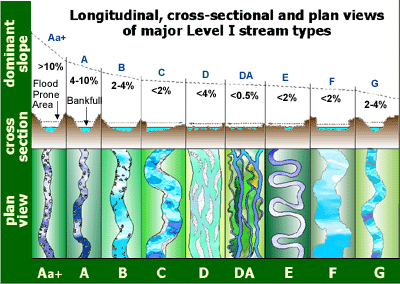

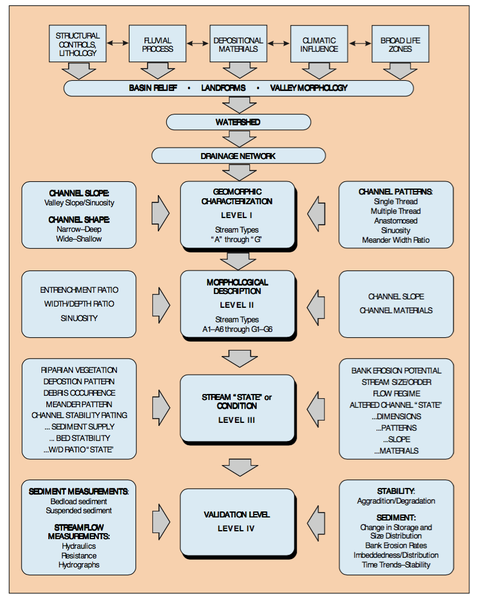
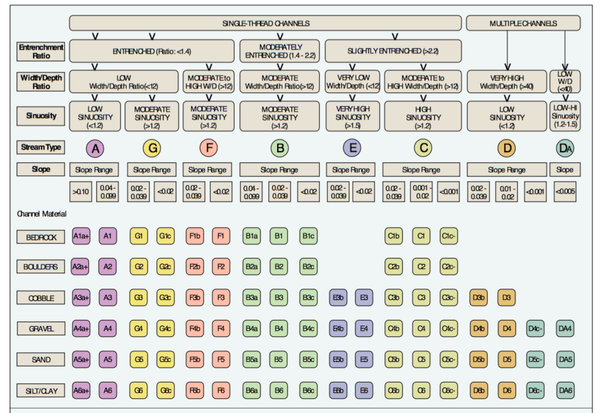










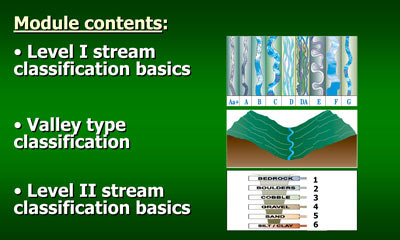
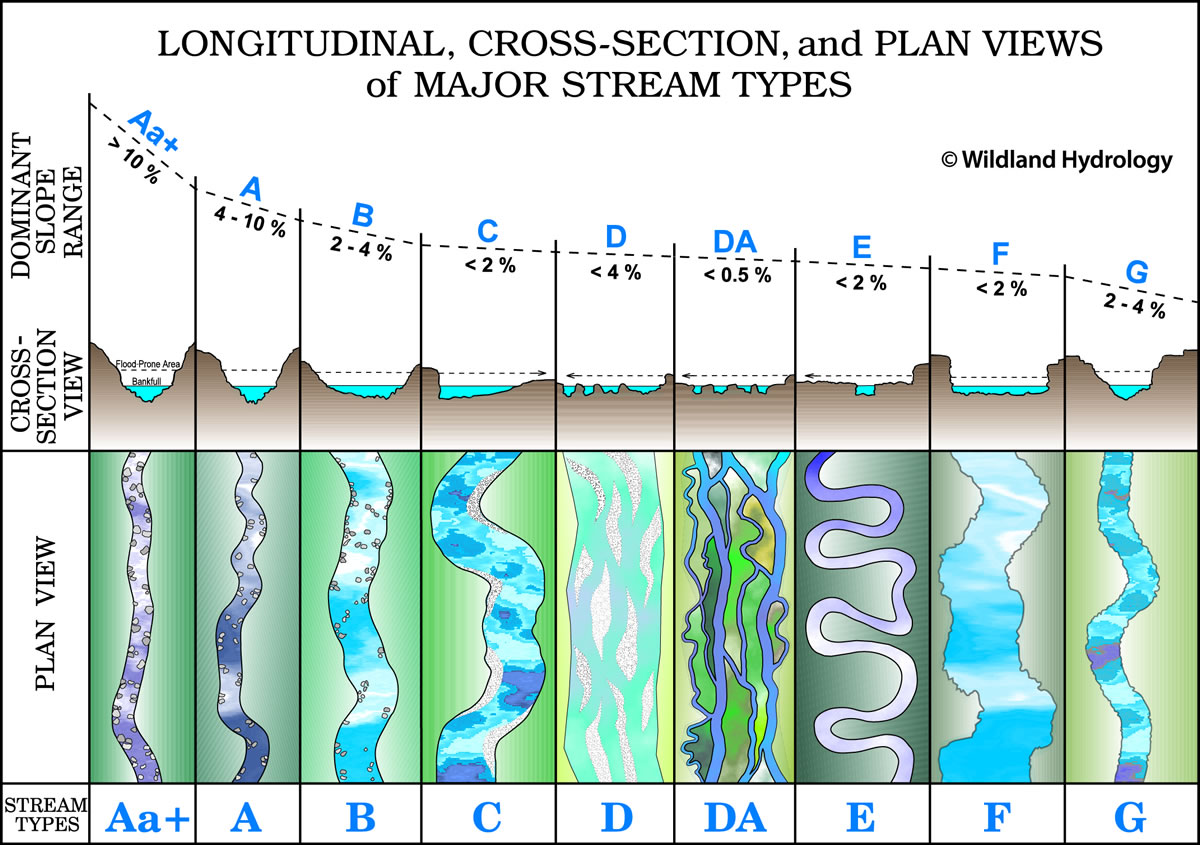
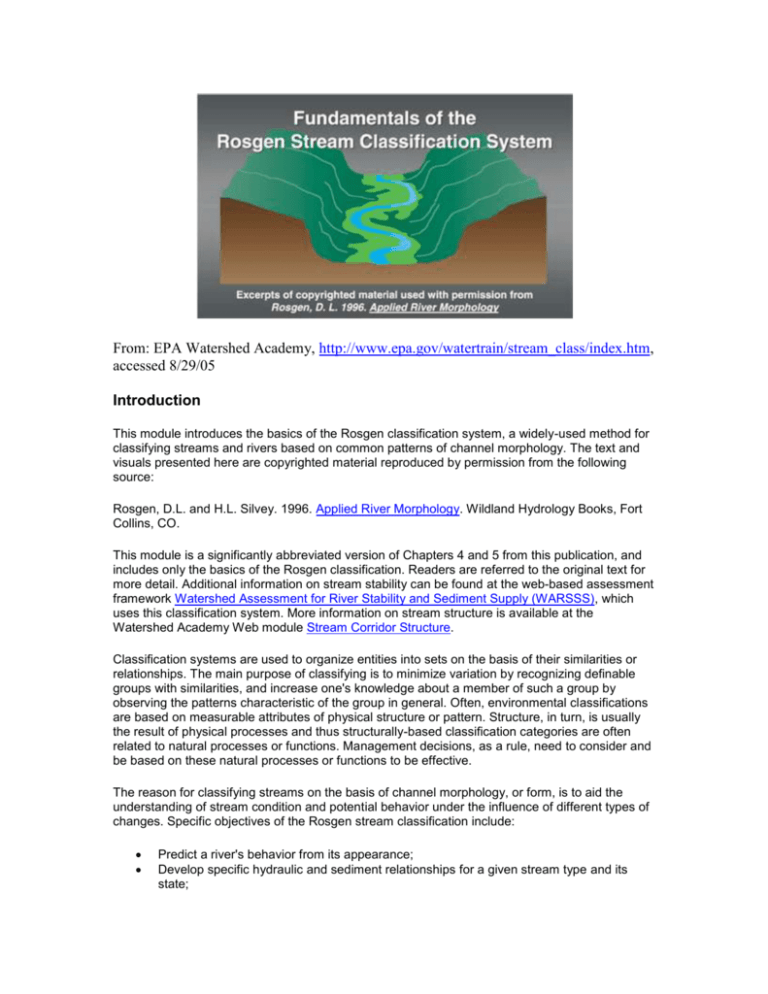





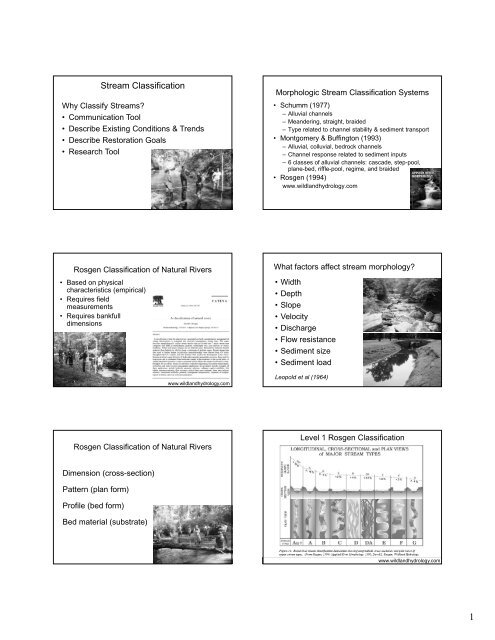
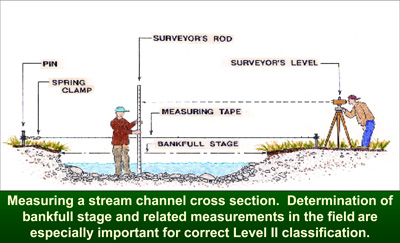







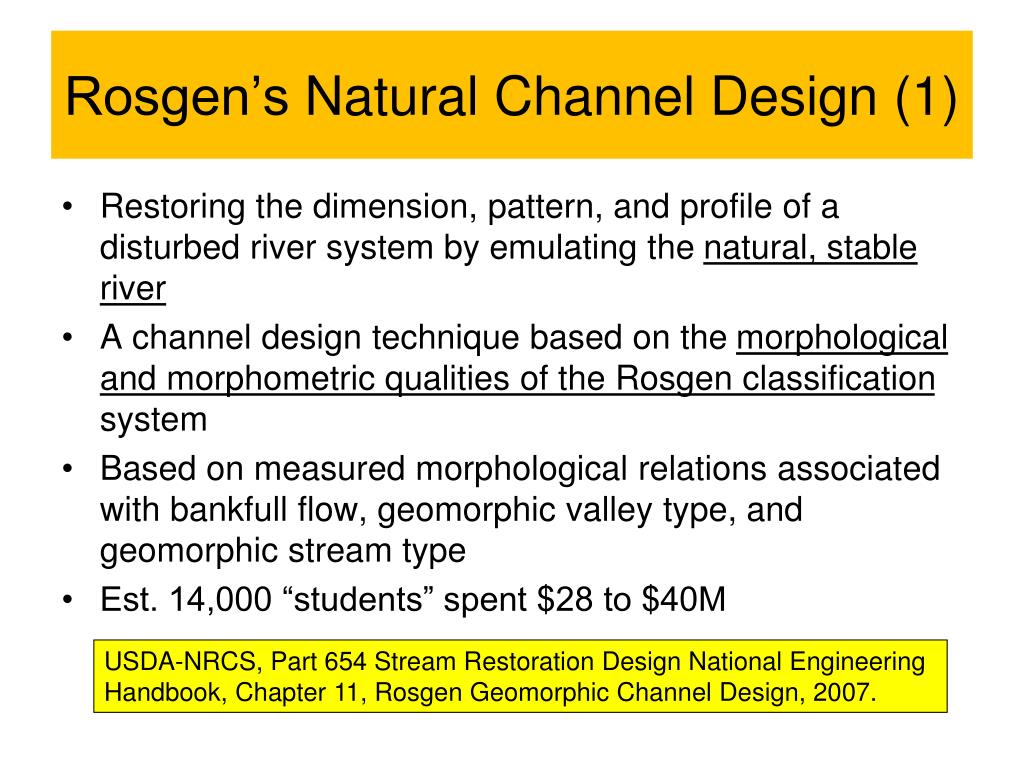

Post a Comment for "Rosgen Stream Classification System"